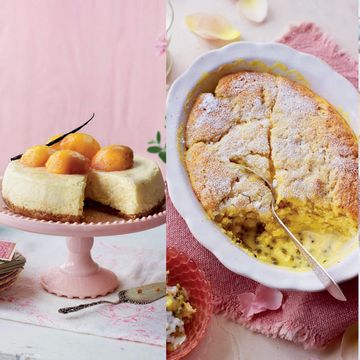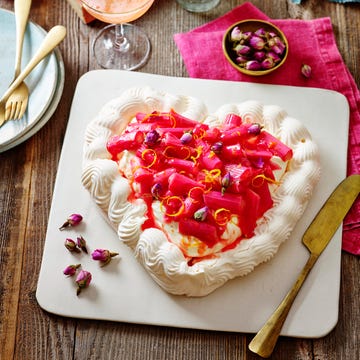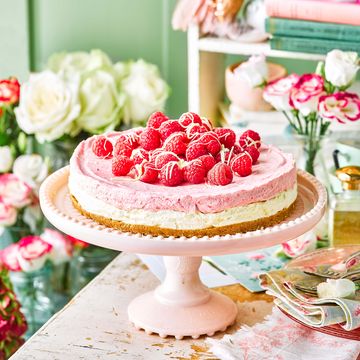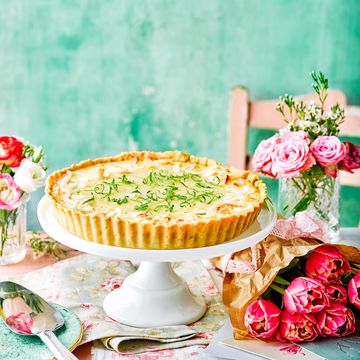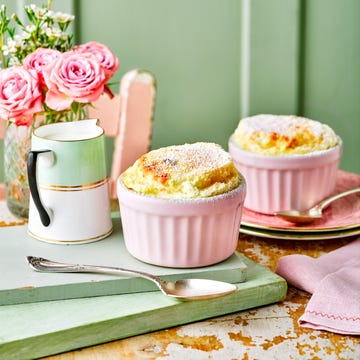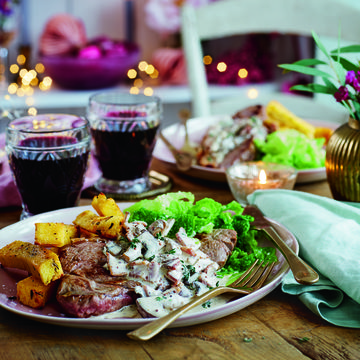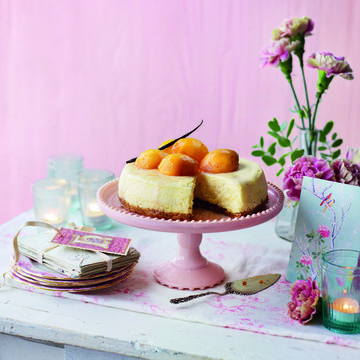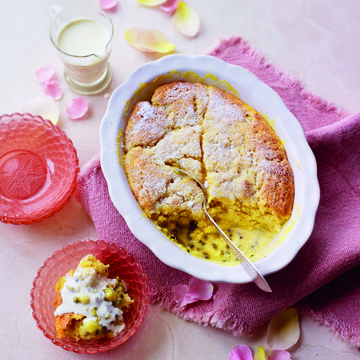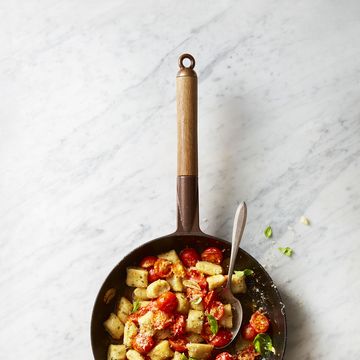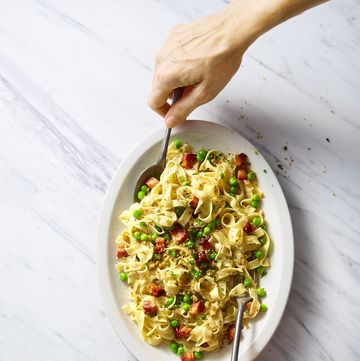Advertisement - Continue Reading Below
For the red sponge
- 125 g
(4oz) unsalted butter, softened, plus extra to grease
- 125 g
(4oz) caster sugar
- 2
large eggs, beaten
- 125 g
(4oz) self-raising flour
- 1/2 tsp.
red food colouring paste (we used Squires Kitchen food paste in Poinsettia)
For the buttercream
- 50 g
(2oz) white chocolate, chopped
- 125 g
(4oz) unsalted butter, softened
- 250 g
(9oz) icing sugar
1-2tbsp milk
sugar heart sprinkles, to decorate, optional
- Step 1
For the red sponge, grease and line a 20.5cm (8in) square cake tin with baking parchment. Preheat oven to 180°C (160°C fan) mark 4. In a large bowl, beat butter and caster sugar until light and fluffy. Gradually add the eggs, beating well after each addition.
- Step 2
Sieve over flour and gently fold into butter mixture. Stir in food colour, then spread the batter into the tin and bake for 15-20min or until a skewer inserted into the centre comes out clean. Cool in the tin on a wire rack, then freeze for 20min to firm up.
- Step 3
When the red cake is cool, remove from tin and press down lightly to compact the sponge. Cut out heart shapes using a 4.5cm (1¾in) heart cutter. (You’ll need about 9 hearts, but cut a few extra.) Put hearts on to a baking tray and put into the freezer to firm up while you make the loaf cake. Grease a 900g (2lb) loaf tin, then line the base and sides with a strip of baking parchment.
- Step 4
For the plain sponge: in a large bowl, beat butter and caster sugar until light and fluffy. In a jug, beat the eggs with the almond extract, then gradually add to the butter mixture. Sieve over self-raising flour and baking powder. Fold into the butter mixture.
- Step 5
Spoon a third of the cake mixture into the tin to cover the base. Remove red hearts from the freezer. Gently and carefully press the neatest ones vertically into the centre of the cake mixture so they fit snugly in a line, leaving a small space at either end for plain sponge batter. Make sure to press the hearts together so there are no gaps. Carefully spoon the remaining plain sponge mixture into the tin. Bake for 45-50min, then leave to cool in the tin.
- Step 6
For the buttercream, gently melt white chocolate in a bowl set over a pan of barely simmering water. Set it aside to cool. Beat the butter until light and fluffy, then gradually add the icing sugar until it is all incorporated. Add the cooled white chocolate and enough milk to make it spreadable. Remove cooled loaf from tin. Spread the icing on top of the loaf cake and sprinkle with heart sprinkles, if you like.
Like this? You'll love...
Almond and apricot cake
Honey and spice loaf
'Eat Me' Fondant Fancies
Easter rainbow cake
Lemon drizzle cake
GH Tip
Crumble up any leftover red cake and freeze in freezer bags. Defrost and use for cake pops.
Per Serving:
- Calories: 547
- Fibre: 1 g
- Total carbs: 64 g
- Sugars: 49 g
- Total fat: 30 g
- Saturated fat: 18 g
- Protein: 5 g

A crack team of highly skilled food content producers, the GH Kitchen Team are Good Housekeeping’s resident recipe developers and all-round food obsessives. GH Kitchen Director Sarah Akhurst is our resident hosting pro and loves nothing more than putting on a foodie feast for friends. Senior Cookery Writer Alice Shields is a former pastry chef and baking fanatic who loves making bread and would have peanut butter with everything if she could. Lover of all things savoury, Senior Cookery Writer Grace Evans can be found eating nocellara olives at every opportunity, and will take the cheeseboard over dessert any time. With a wealth of professional kitchen experience between them, they’re dedicated to ensuring every Good Housekeeping recipe is the best it can be, so you can trust they’ll work every single time.


